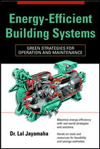A few months back my column was on preparing for your metamorphosis. This metamorphosis must go beyond you to the very way we do business and become an active part of our path to the future.
A press release from Frost & Sullivan titled, "Companies with Multi-Service Capabilities Change Landscape of Integrated Facilities Management," (also cited in last month's "Issues & Events" department) states:
"New analysis from Frost & Sullivan's (www.BuildingTechnologies.frost.com) North American Integrated Facilities Management Services Markets reveals that revenues in this industry totaled $12.39 billion in 2002 and are projected to reach $21.89 billion by 2009.
"Corporate America is rethinking its approach to facilities infrastructure, with an increasing number of companies concluding that outsourcing makes sense as a way to cut costs and focus on revenue-generating core competencies,' says Frost & Sullivan Industry Manager Sanjiv Bhaskar.
The need for expert professional maintenance of sophisticated heating, ventilation, air-conditioning, data communications systems and constant replacement cycles is likely to benefit facility service providers."
It goes on to say:
"Consolidation can help integrated facilities management service companies to better meet the needs of their customers as well as provide a significant cost advantage in a competitive and thin-margin business. The ability to provide a bundled solution individually or through alliances is likely to be a strong competitive factor," adds Bhaskar.
"The 'single-sourcing' trend is creating demand for companies that can provide comprehensive services, best practices management, and consistent engineering standards."
So how are you capitalizing on this opportunity? Has your new company morphed and adjusted its function and purpose?
Making this business model come alive is going to require us to go where we have not gone before, while increasing our IT skills and IT savvy to be the service provider that wins our clients' trust as the contractor of preference who can successfully extend the reach of the corporate enterprise.
Billions of dollars await us, and although a portion of this work is traditional building automation work, you may never get to show your wares if you have not morphed to be the new service provider your client is looking for. If it is not possible for you to develop this kind of depth on your own, are you a value-added member of a winning team that has these capabilities? Reformatting our companies to play in this rapid developing new marketing arena is mandatory to our survival.
How do I start my company's transformation? Learn more about the IT enterprises that are related to your present markets. Find out if there will be and if so, who is likely to be this single-source contractor. Find out how you can add value to this contractor's proposal. The greatest problem that single-sourcing companies will have in executing their client's outsourcing requirements will be maintaining the core competency of their proposal. The only way that this core competency can be maintained simultaneously in many geographical areas is to use existing local talent, which will be reformatted as part of the single-source team.
Being part of this team will provide a learning platform to better understand the focus on revenue-generating core competencies. The ability to learn the clients' needs while observing the role of all the other team players will allow an increased understanding. This understanding will allow the single source concept to be applied to smaller and smaller enterprises.
In my February 2002 column, I stated:
"We are now the innovators that extend the reach and interaction of our client's information enterprise. In carrying out this task effectively, we must interface with our client's enterprise gurus, while sorting through our own technology evolution cloud to determine what is real and what is not. Once we understand our mutual capabilities, we must roll this into a financially justifiable package that will provide 'off balance sheet financing' to reduce or eliminate our client's real costs. Do not interpret that creative financing means reducing our market share, quite the opposite. Getting involved in our client's financial plan will allow us to innovate and help put the cost, savings and paybacks where they should be." ES



